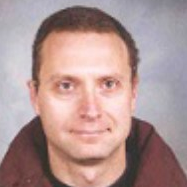Numerical and Analytical Methods in Electromagnetics
A special issue of Applied Sciences (ISSN 2076-3417). This special issue belongs to the section "Applied Physics General".
Deadline for manuscript submissions: closed (31 May 2020) | Viewed by 36702
Special Issue Editor
Special Issues, Collections and Topics in MDPI journals
Special Issue Information
Dear Colleagues,
Like all branches of physics and engineering, electromagnetics relies on mathematical methods for modelling, simulation, and design procedures in all of its aspects (radiation, propagation, scattering, imaging, etc.). Originally, rigorous, analytical techniques were the only machinery available to produce any useful results. Basically, the aim was the solution of partial differential equations (such as the Laplace, Poisson, Helmholtz, and wave equations) since the electric and magnetic fields are the unkown quantities in such expressions, although exact, analytical methods (e.g., the Wiener–Hopf technique) were limited to canonical geometries, which are unfortunetely rare in nature. Hence, in the 60s and 70s, emphasis was placed on asympotic techniques, which produced approximations of the fields for very high frequencies when closed form solutions were not feasible. Typical examples of such techniques were the Geometrical and Physical Optics (GO and PO, respectively), improved by the Geometrical, Physical, and Uniform Theories of Diffraction (GTD, PTD and UTD respectively). Later, when computers demonstrated explosive progress, numerical techniques were utilized to develop approximate results of controllable accuracy for arbitrary geometries. Either differential or integral equations were discretized, leading to standard techniques, such as the Method of Moments (MoM), finite element method (FEM), finite difference time domain method (FDTD), finite integration technique (FIT), and Method of Auxiliary Sources (MAS). Researchers soon realized that several practical problems required extremely high computational resources, in terms of memory and CPU time, to handle, typically, millions of unknowns. Therefore, “fast” variants of the latter techniques were developed to suppress the computational cost, such as the adaptive integral method (AIM); the fast multipole method (FMM); its parallel version, called the multi-level fast multipole algorithm (MLFMA); and its time domain counterpart, i.e., the plane wave time domain (PWTD) method. The lists above are by no means exhaustive; there is a plethora of additional algorithms, having evolved particularly over the last few years, designed to reduce the complexity and simultaneously improve the accuracy of calculations. In this Special Issue, the most recent advances thereof will be presented, to illustrate the state of the art in mathematical techniques in electromagnetics.
Prof. Dr. Hristos Anastassiu
Guest Editor
Manuscript Submission Information
Manuscripts should be submitted online at www.mdpi.com by registering and logging in to this website. Once you are registered, click here to go to the submission form. Manuscripts can be submitted until the deadline. All submissions that pass pre-check are peer-reviewed. Accepted papers will be published continuously in the journal (as soon as accepted) and will be listed together on the special issue website. Research articles, review articles as well as short communications are invited. For planned papers, a title and short abstract (about 100 words) can be sent to the Editorial Office for announcement on this website.
Submitted manuscripts should not have been published previously, nor be under consideration for publication elsewhere (except conference proceedings papers). All manuscripts are thoroughly refereed through a single-blind peer-review process. A guide for authors and other relevant information for submission of manuscripts is available on the Instructions for Authors page. Applied Sciences is an international peer-reviewed open access semimonthly journal published by MDPI.
Please visit the Instructions for Authors page before submitting a manuscript. The Article Processing Charge (APC) for publication in this open access journal is 2400 CHF (Swiss Francs). Submitted papers should be well formatted and use good English. Authors may use MDPI's English editing service prior to publication or during author revisions.
Keywords
- GTD
- UTD
- PTD
- MoM
- FEM
- FDTD
- MAS
- AIM
- FMM
- MLFMA






